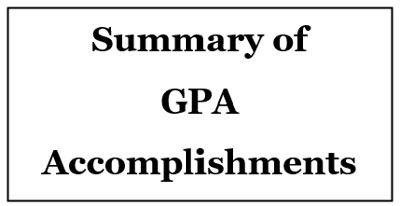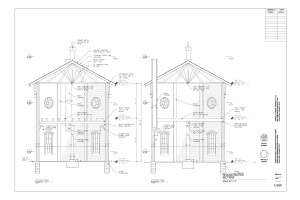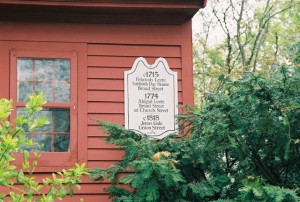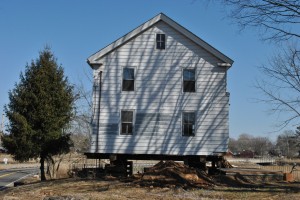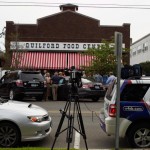 What a great party we had for the “Hope Springs” premier! Thanks to our hosts at the Guilford Food Center and Breakwater Books and to all of the merchants who sponsored the very successful fundraiser. The event on August 8th brought together excited moviegoers, local and state politicians, and even a few local businessmen in tuxes. Guilford Preservation Alliance board member Ellie Green’s husband Barry took great photos capturing the spirit and excitement of the evening. [Read more…]
What a great party we had for the “Hope Springs” premier! Thanks to our hosts at the Guilford Food Center and Breakwater Books and to all of the merchants who sponsored the very successful fundraiser. The event on August 8th brought together excited moviegoers, local and state politicians, and even a few local businessmen in tuxes. Guilford Preservation Alliance board member Ellie Green’s husband Barry took great photos capturing the spirit and excitement of the evening. [Read more…]
On Track
The next time you visit Guilford’s modern Shore Line East commuter rail station at the bottom of Old Whitfield Street, take a few moments to study the tall, octagonal brick water tower that stands sentinel on the north side of the tracks, a few hundred feet east of the passenger platform.
A crew of GPA volunteers recently cleared away the overgrowth and debris that have obscured this wonderful historic structure for years, allowing us all to appreciate the soaring pilasters, elegant corbelling, gracefully arched windows, and other details that make it one of Guilford’s architectural gems.
The GPA has long been in the forefront of efforts to bring the water tower and the adjacent rectangular engine house back to life. Both buildings date from around 1875, when Guilford’s 1850s-vintage wood-framed passenger depot–tragically demolished by Amtrak in 2000–was served by no fewer than a dozen steam-powered trains a day.
Today, twice that many Shore Line East trains stop in Guilford, bringing thousands of visitors and commuters to our doorstep every month of the year. It doesn’t take much imagination to envision the refurbished water tower as an iconic portal–say, a welcome and information center for tourists eager to explore our town’s wealth of historic, cultural, and recreational resources.
The 19th-century station buildings are an irreplaceable part of Guilford’s heritage. But preserving them is not about turning back the clock. It’s about planning for the future and capitalizing on one of our most distinctive and valuable assets. In short, it’s about making heritage and cultural tourism an integral part of Guilford’s 21st-century economy.
Elsewhere on this website you can read about some of the GPA’s related initiatives, including walking tours of the historic town center led by specially trained Guilford High School students, a presentation on sustainable development by one of the leading “green” developers in the country, and a new website, www.historicguilford.org, dedicated to promoting our town as a tourist destination.
The train station project is a key part of that larger effort. It’s also an urgent priority, as the continuing deterioration of the water tower indicates. Thanks to the generosity of dozens of Guilford citizens, the GPA has a substantial fund earmarked for stabilizing the station buildings, and we are currently assessing the possibility of raising additional funds to install a new roof on the water tower.
Pending resolution of legal issues relating to ownership and potential liability for toxic cleanup on the site, the GPA board last year decided to move ahead incrementally, starting by commissioning field-measured architectural plans of the two station buildings. Over the past several months, local architects William Mack and Randy Siress have donned hard hats, braved the elements, and volunteered hundreds of hours of time to create the beautiful drawings of the water tower that you can view here.
Since the original plans for the structure no longer survive, this painstakingly researched documentation enables us for the first time to accurately envision the water tower in all its pristine splendor. From a practical standpoint, the drawings will serve as a blueprint for the building’s restoration and make reconstruction possible in the event that it collapses in a hurricane or other natural disaster.
On a separate but parallel track, the GPA is collaborating with Amtrak, Connecticut State Archaeologist Nick Bellantoni and his colleagues at the State Historic Preservation Office, town officials, and other interested parties to develop a long-range plan for preserving the water tower and engine house as part of an ecologically and economically sustainable effort to revitalize the neighborhood around the train station.
Many pieces will need to fall into place before this complex project becomes a reality. In the meantime, the GPA is working with the state Department of Transportation to install a permanent historical display about the old passenger and freight depot in the foyer of the Shore Line East commuter rail station, a project made possible through the generosity of Boynton Schmitt, a long-time friend of preservation in Guilford.
Both the exhibit and the eventual adaptive reuse of the old station buildings demonstrate, in a very tangible way, what we mean when we speak about connecting Guilford’s past and future.
Best wishes,
Harry Haskell,
President
Walking Tours to Begin
The latest project I have been working on is developing the Historic Walking Tours program here in Guilford. We have assembled a group of enthusiastic high school student researchers and guides who will lead visitors on two newly-developed tours, both encompassing the Guilford Historic Town Center (which is listed on the National Register of Historic Places). One tour will focus on the history of Guilford and include an introduction to three of Guilford’s house museums. The second tour will focus on architecture and include Guilford’s historic districts and scenic Broad and Fair Streets.
Highlights of our walking tours will include our well-known eight-acre green, the home site of the most popular poet of the 19th century, six homes on the National Register of Historic Places, two historic districts, stories of Indian Wars and regicides, stories of America’s most popular novelist of the 19th century and Guilford’s most famous summer guest, details of New England slavery, histories of separatists from the Church of England, revolts within the Congregational Church, and the expulsion of Abolitionists. All in a community with the oldest stone house in New England, the third most pre-Revolutionary War homes in the Northeast, and almost 375 years of history.
These same student guides are developing a Historic Architecture Walking Tour of our most beautiful residential streets filled with 18th and 19th century homes. These homes built for sea captains, preachers, merchants, traders, and congressmen are representative of Colonial, Federal, Greek Revival, Italianate, Gothic Revival, Queen Anne, Second Empire, and the rare Octagonal architectural styles. Students are also discovering the stories of the women and men who lived in these homes.
Dennis Culliton.
Editor’s Note: Instead of the student-guided tours described above, a free walking tour on Saturdays at 11 am in the summer season begins at the Information Kiosk at 32 Church Street. Check the information on the visitguilfordct.com website at http://www.visitguilfordct.com/todo-category/tours/ The same site offers information about self-guided tours of the Alder Brook Cemetery and of the Fair Street Historic District.
Our Spring Program
 Anthony Sblendorio, a pioneer in the field of sustainable and regenerative architectural and landscape design, will present a talk entitled “Principles of Sustainable Development” at 7 p.m. Tuesday, June 5, in the meeting room of the Guilford Free Public Library, 67 Park Street. Cosponsored by the GPA and the library, the event is free and open to the public.
Anthony Sblendorio, a pioneer in the field of sustainable and regenerative architectural and landscape design, will present a talk entitled “Principles of Sustainable Development” at 7 p.m. Tuesday, June 5, in the meeting room of the Guilford Free Public Library, 67 Park Street. Cosponsored by the GPA and the library, the event is free and open to the public.
Saving 218 Water Street
[By Penny Colby] In 2005 the Guilford Board of Selectmen adopted a Delay of Demolition Ordinance at the instigation and with the assistance of the Guilford Preservation Alliance. If a demolition permit is requested this ordinance gives [Read more…]
Guilford: A Walking Guide
The first edition of Sarah Brown McCulloch’s Guilford: A Walking Guide, The Green & Neighboring Streets was published in 1989 with principal funding provided by the Guilford Preservation Alliance. We are presenting for the first time an online version of the text (from the 2006 seventh printing, revised, with a few editorial notes in brackets from 2012). In the future we plan to present an illustrated version. A new revision of McCulloch’s book is expected to appear in the summer of 2012.
You can click here to begin reading Guilford: A Walking Guide.
Dispatches from Dennis: Winter 2012
This summer, I visited England with my wife who travelled there to meet a client for her job as a consultant. This is the first time in almost 24 years I was able to travel with my wife on a business trip since my duties as Mr. Mom have diminished with the growth of my three children. With my wife having two days of breakfast-lunch-dinner meetings scheduled during the trip, I was left with two full days to explore the parts of England within driving distance of London. So I needed a plan and using this new fangled technology called a search engine (Google), I discovered a village on an ancient map of East Devonshire with the rare (but somehow familiar) name of Culliton (my surname.) Currently, the village is named Colyton and is located near the village of Colyford. It is close to where the River Coly flows into the English Channel.
Now I always considered Culliton an Irish name but Ireland, like the U.S. is kind of a melting pot. Many of the names in Ireland are the results of the various immigrant groups including Druids, Celts, Vikings, Normans, English, Spanish, and Scots. I have been told by Irish friends and acquaintances that the Cullitons are from County Kilkenny, Ireland. But because of the fact that the name Culliton and its variations have been identified as an Irish-Anglo-Norman names, there is a possibility that it is the result of the place-name Culliton/Colyton, Devonshire. And even though DNA testing through the Y – Chromosome can establish male ancestral origins (this can be done on the female side too), I thought the trip to Colyton, at might reveal my actual, if not my mythological homeland!
But then the nightmares returned. They started five years ago during a trip to England with my family. We rented a compact car and I started driving from Heathrow Airport toward Gloucestershire, a couple of hours west of London. Not only was the steering wheel on the right (as in wrong) side of the car, and not only did I have to shift with my left hand, and not only did every intersection contain a roundabout, but driving on the left side of the road was very disconcerting. And while I scared (scarred?) my family as I continuously sideswiped the brush on the left side of the car, I developed recurring nightmares about driving down the wrong side of the road and causing a catastrophic accident. These memorable dreams required me to change the destination of my adventure. I needed an adventure with public transportation.
So instead of searching for the ancestral home of the Cullitons, I would explore the ancestral home of the forefathers of my current home, Guilford, Connecticut. I decided to take my daypack and go for a hike in Surrey, England. This is the county south of Metropolitan London and the home of many of the original settlers of Guilford, Connecticut. I planned a trip where I could take the train from London to Ockley Station, Surrey and then hike through Ockley and end up in Guildford, (spelled Guilford on an old map) Surrey. This would be a two day hike with a sleepover somewhere in between the two locations. When I was done with the hike, I would be able to take a train back to London from Guildford. As many of you know, Ockley is the home of Reverend Henry Whitfield, the leader of the families who settled Guilford, Connecticut in 1639. The main city (or borough) closest to Ockley is Guildford, Surrey, our town’s namesake (although possibly indirectly.) By consulting online maps, I was able to guess that I could take a two day hike and arrive at Guildford on the second day before the sun set.
Ockley and Guildford were not too far apart really; maybe fifteen miles as the crow flies. But unable to fly like a crow, and unwilling to walk the entire distance on paved roads, and unable to find suitable berthing along the most efficient route, I developed a route that allowed me to take advantage of “public rights of ways,” mostly footpaths and bridleways through public and private land. This stretched my hike to about 25 miles, which is an appropriate distance for two days of hiking. With the help of the cartographers at Stafford’s in Covent Gardens, London, I was able to purchase a map that guided me on this hike.
Every culture and community has its origin story, and Guilford surely has its own story. In Steiner’s History of Menunkatuck, (1897), the story of the Reverend Henry Whitfield and his band of Puritans is told with details about where they came from and why they left England. King James, Oliver Cromwell, Archbishop Laude, Thomas Hooker, John Davenport, Lord Saye and Sele, Lord Brooke, and George Fenwick all seemed to have a hand directly or indirectly in why this Puritan group left England for the New World.
So I was excited to head to Ockley, where Henry Whitfield emigrated from. I took the morning train from London and arrived around 10 a.m. at Ockley Station. Taking out my trusty map, I followed a public path due east through barley fields to the village. Downtown Ockley is found along an ancient Roman road that is as straight as an arrow for many miles. After stopping for lunch at a local pub, I was directed to the old parish church on the north end of town. The church was St. Margaret’s and it is the church where Henry Whitfield was the rector before resigning to gather a company of fellow Puritans with him to travel to the New World to form a plantation. I was excited to find a plaque inside the 13th century church listing Reverend Henry Whitfield as the rector from 1619 to 1638 and another plaque commemorating his voyage to and founding of Guilford, Connecticut.
From there I hiked north through the manorial forests to the manor house called the Wotton House which is both an inn and conference center. I arrived there as the local nobility, the Lord Lieutenant of Surrey, had gathered her leadership in ceremonial military costumes. My L.L. Bean hiking clothes did not fit into the dress of the day, but all were polite.
The next day, I continued my hike through the North Downs Way public trails that followed former drover and pilgrimage routes. It was a great route that included World War II pillboxes, well managed forests, and heath. In England, keeping open pastures is part of the conservation efforts. They have even brought back an ancient breed of cattle that help them manage the native plant species through grazing.
I continued my hike west through forests, along bridal paths and foot trails. One particularly challenging section was the hike up to St. Martha’s Church which is located at the top of a very high hill. The most challenging part was the sandy path that made the hike similar to climbing up a very high sand dune. At the top, I found an ancient church, a very old graveyard, and a beautiful view of the Borough of Guildford.
The hike from to Guildford from the church was mostly downhill. But as I arrived along the riverbank of the Wey River, I realized that the Guildford in Surrey, England had little geographical resemblance to my American Guilford. This was a settlement along a navigable river surrounded by hills. Guilford, CT is a settlement along a broad plane with tidal rivers along salt marshes.
Some local historians or experts of rural England in the audience may have already surmised my mistake. Although Guilford, Connecticut is named after a Guildford, England, it is named after East Guldeford in Sussex, England, not Guildford, Surrey. This East Guldeford is a village along the English Channel named after Sir Richard Guildford, a Knight of the Garter and adviser to King Henry the VII who paid to have the salt marshes drained and diked in the 1480s. In this village there is a broad plain with salt marshes, closely resembling Guilford, Connecticut.
Although I did find Ockley and the mother church to the Puritans’ churches that settled Guilford, North Guilford, Madison, and North Madison, CT, I did not find the Guilford or Guildford, our town’s namesake.
What I did find from the hike was what the name Guilford or Guildford or Guldeford means. These names mean, according to legend, Golden Ford. At a shallow spot on the river where there was a natural crossing, the sand beneath the water was golden in color. It is an old Norman name related to the gilding on a book or the gilded age. I also found that Surrey and Sussex, the counties south of London are beautiful places where the hiking trails are lovely, the people are friendly, and the history is magnificent.
In the future, I would like to talk more about St. Margaret’s Church in Ockley and the group trying to preserve that church for next 700 years. Stay tuned.
Heritage Tourism Initiative
On Tuesday, October 18, 2011, the Guilford Preservation Alliance sponsored a workshop on Heritage Tourism. The workshop was led by Carolyn Brackett, the Senior Program Associate for the Heritage Tourism Program of the National Trust for Historic Preservation. Susan Misur covered the event and her article appeared in the Friday, October 21, 2011 issue of the New Haven Register.
New inventory on our website
We have just posted on our website (on the page entitled GPA Survey of Historic Places) a new, comprehensive annotated list of properties in Guilford. This survey, entitled “Significant Structures Fifty Years Old or More, Guilford, [Read more…]
Civil War documents
Dispatches from Dennis: Spring 2011.
I have been studying the Civil War in spurts and starts since I was sent to Petersburg, Virginia in the 1980s for procurement training. Civil War history contains such a vast amount of information from varied sources that when I restarted my studies a few years ago, I decided to try to connect my understanding to local soldiers and local units here in Guilford. The problem that surfaces while studying the Civil War is that the more you discover, the more you realize what you do not know. This can be frustrating—but more often motivating for students of history.
I have always liked American History, long before I became a history teacher. But since three of my grandparents were born in Canada and the fourth was born in Upstate New York, across the border from Canada, I did not believe that my own family’s heritage preceded the 1880s in the U.S. I have always felt that people like George Washington, Abigail Adams, and Abraham Lincoln are our cultural ancestors. And on a similar note, just as I have adopted Guilford as my hometown, I have mentally or virtually adopted Guilford soldiers as Union Soldiers in my own family tree.
I started out one summer on the Guilford Green while looking at the Civil War statue with all of the names of soldiers who died fighting to preserve the Union. I made my way into the local history room (now called the Edith Nettleton Room) and began looking at records. With the assistance of Penny Colby, the reference librarian, the Raphael Ward Benton letters were dusted off and one of my spurts began. The longest list of soldiers on the monument are soldiers from the 14th Connecticut Volunteer Regiment, and Raphael Ward Benton, who wrote faithfully to his wife during the war, served in that regiment in Company I.
The Raphael War Benton letters are available online to read (at http://www.guilfordfreelibrary.org/benton.cfm ). If you are interested, please push through the first two or three letters and begin to read closely when Ward Benton starts to right home from his Civil War unit. Using those letters, and books such as History of the Fourteenth Regiment, Connecticut Vol. Infantry, by Charles D. Page (1906), Mr. Dunn Browne’s Experiences in the Army: The Civil War Letters of Samuel W. Fiske, edited by Stephen W. Sears (1998), The Boys of Rockville: Civil War Narratives of Sgt. Benjamin Hirst, Company D, 14th Connecticut Volunteers, edited by Robert L. Bee (1998), and Connecticut Yankees at Gettysburg, by Charles P. Hamblen (1993), I was able to form a picture of this regiment’s contribution; but more specifically, the contributions in the Civil War made by our Guilford soldiers.
The 14th Connecticut Volunteer Infantry was formed in August of 1862 and fought in all the major battles of the Army of the Potomac starting at Antietam Creek on 17 Sep 1962, and ending at Appomattox Courthouse on 9 Apr 1865. I have dragged my family (and sometimes travelled alone) to Antietam, Fredericksburg, Chancellorsville, Gettysburg, Wilderness, and Petersburg (again) over the last decade. These visits to the battlefields, as well as the books, letters and other documents, helped us develop a picture of the men from Guilford who fought and died in the war.
Documents such as the Record of Persons Made Orphans or Half Orphans by the War of the Rebellion in the Town of Guilford by Alvin Talcott, Registrar of Guilford, give us a great deal of insight. For instance, we know from other records that Richard Hull of the 14th Connecticut was killed at the Battle of Antietam Creek and is buried at the National Cemetery there in Maryland. But these records (provided by former First Selectman Carl Balestracci) also mention that Corporal Hull was “shot in the mouth while in the act of saying, ‘Keep cool boys.’” He left a nine year old daughter Catherine.
In another listing we find that the child Hattie L. Field, born in February of 1863, was the orphan of Edmund Field (also of the 14th,) who died five months prior to her birth after the Battle of Antietam. (At a talk I gave at the library this autumn, a member of the audience came up to me and mentioned that Hattie was her great-grandmother.)
Another record of interest is of Nathan Clements, also of the 14th Connecticut Volunteers. He died after a skirmish at Morton’s Ford, Virginia, in the winter of 1864. His record shows that he had already been promoted from corporal to sergeant. And because of his bravery, he was to receive a commission (to become an officer) but died of his wounds instead.
But is seems that the more information we gather, the more questions that remain unanswered. As I was compiling a list of soldiers to update the list read by the Guilford veterans group at the Memorial Day Ceremony, I found an intriguing set of soldiers’ names. In the History of Guilford book written by Ralph Dunning Smith (1877), there were three soldiers with the last name Fowler from Guilford who served in the 27th Connecticut Volunteer Infantry. In the middle of December, 1862, the unit was in Fredericksburg, Virginia in the same Corps as the 14th Connecticut Volunteers. The 27th attacked Marye’s Heights along with the 2nd Corps and was repulsed. The three Guilford soldiers named Fowler died within a month of each other after the battle. More intriguing, Samuel Fowler was 45 years old and Emerson Fowler was only 15 years old. Richard Fowler was a 1st Sergeant in the unit. It seems a sad and strange coincidence that these three men from Guilford with the same name would serve and die within such a short period of time. I have yet to learn if they are related, but I am sure that this information is available in the Edith Nettleton Room of the Guilford Free Library.
The stories we can find of Richard Hull’s leadership, Nathan Clement’s bravery, and Raphael Ward Benton’s attempt to balance his duties as a husband, a father, and a soldier while foreshadowing his death (in 1862) in his carefully written letters—these letters, these books, these battlefields and stories are waiting to be discovered or rediscovered by all of us, neighbors and descendants, and by those of us who consider ourselves virtual descendants of our Civil War soldiers.
Dennis Culliton, May 2011

